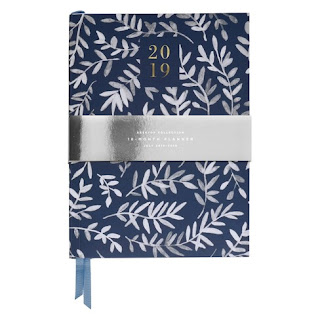 |
| Kaboompics via Pixabay |
You'd think that after all these years of writing about planners that I'd have a go-to planner -- one I choose every single time so that planner shopping is a no-brainer.
But I don't.
I used to have one of those planners when I was working full-time. It was expensive, but it had all the elements I needed. And, since I didn't carry a lot around, I didn't mind that it was bulky and not exactly lightweight because everything I needed was in there.
It took me a long time to find that perfect, albeit expensive, fit, so I guess I shouldn't be surprised that it's taken me as long as it has to find my next perfect fit. The precise interior of my primary planner (yes, I have more than one) changes somewhat from year to year, mostly because I can't seem to find an exact match, but this year's planner marks a definite departure from my norm. I decided that I wanted more room for notes, so I opted for a planner that's more of a journal, with only monthly view (not the daily I usually go for) and lots of room for notes.
That's Planner #1. And I love it. The more I use it, the more I don't know how I did without this much space for notes.
Planner #2 is my work calendar, and it doubles as a lesson plan book of sorts. This is the planner with the weekly and monthly view, but it contains only my class and work information. More utilitarian than pretty, it needs to have just weekly and monthly views and maybe a little space somewhere for notes; everything else is immaterial.
Planner #3 is one I try to replicate every year -- a cheap (I try to pay only $1), thin book with a two page spread for each month and maybe a couple of extra pages for notes or contacts at the back. This is my goal-setting and writing plan book, where I keep track of my monthly goals and my writing assignments.
 |
| My planner. Photo: target.com |
But every single one of these books closes. This is, of course, to be expected as that's an integral part of how a planner is set up. As someone with an I need to see it personal style, I need a place to corral all of this information into a format I can see at a glance.
Enter my Knock Knock notepads. I'd seen these in a number of gift shops and bookstores (and on Amazon), but then discovered I could go to the website and explore the whole gamut of options, not just the ones the store buyer liked. I settled on the "This Week" version, which I've been using since sometime last summer. Then, after Christmas, I found several others (which appear to be discontinued) at Marshall's, and I added a different version of the weekly planner and a weekend planner to my collection.
Each Sunday (okay, sometimes it's Monday), I check my planner and transfer any appointments to my "This Week" sheet, which, by the way, also has a "Next Week" block so I can give myself a heads up if I need to do something to prepare for an upcoming appointment hidden in my neatly closed planner.
But I digress.
I then put a clean sheet of copy paper or notebook paper on a clipboard with my 6 x 9" "This Week" sheet on top. The difference in size between the two pages allows me to use the margins of the larger page to make a master list from which I transfer tasks to the appropriate day of my "This Week" sheet.
If this sounds like a lot of work to you, try keeping track of all of this in your head.
All kidding aside, this system might be way too complicated (or time-consuming) for you. You might prefer simply one planner and one master list, and if that works for you, that's wonderful. Before landing on this plan, I tried all sorts of ways of keeping my lists separate yet merged, and something always fell through the cracks. For me, this set-up provides the perfect blend of visibility for immediate planning (and urgent tasks) and long-term planning. Writing the tasks out each week keeps them in the forefront of my mind and, when I find myself overrunning the space provided, it makes me stop and think about whether I might be overloading the day -- something a big, blank sheet of paper just doesn't take into account.
As a serious stationery lover, I get very excited bout finding my "just right" fit and I'm a sucker for pre-printed pads that are a match for my personal style. These are the kinds of things I like to splurge on, but you might prefer to go more basic and/or make your own.
Have you found your perfect set-up? If not, what is your current set-up missing?

No comments:
Post a Comment